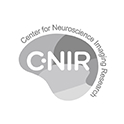Our center was founded in 2013 by Director Kim Seong-Gi, one of the world’s leading MR physicists. Following his vision, and supported by generous funding from both the Institute for Basic Science (IBS) in Korea and the Sungkyunkwan University, our center has focused on functional MRI, which indirectly measures brain activity as reflected by hemodynamics. Today, we are fortunate to house some of the best MRI facilities in the world, accommodating both primates (humans and non-humans at 3T and 7T) and rodents (9.4T and 15.2T, with concurrent optogenetic stimulation and/or optical measurements of neurophysiology). This unique setup allows us to showcase the advantages of functional MRI research across different species, and importantly, to combine these approaches to tackle some of the most challenging questions in neuroscience.
One of the key research questions pursued at our center concerns the role of the prefrontal cortex in perception—our ability to see, listen to speech and music, pay attention to traffic while driving, feel pain, enjoy the company of others, and experience emotions like sadness, joy, and fear. The prefrontal cortex is particularly developed in humans and primates. In rodent models, which are commonly used in neuroscience, there is a lack of homologues for some specific prefrontal regions, such as the granular lateral prefrontal areas. Traditionally, these brain regions are thought to be crucial for high-level cognition, such as our ability to think, speak, count, and learn new things in novel situations. A well-developed prefrontal cortex is believed to support these cognitive functions. However, could it also be that humans subjectively experience the world differently from other animals, such as mice, because we possess these unique brain structures? What might be distinct in the way we process perceptual information? How might understanding these brain mechanisms inform the future design of artificial intelligence?
To answer these questions, we emphasize the necessity of both human and animal neuroimaging research. Understanding the human brain is ultimately our primary goal, as its structure may differ significantly from that of other animals. However, our tools for studying smaller animals are often more precise. By combining these approaches, we aim to achieve synergistic benefits.
We focus on two broad research themes:
1. Systems & Intervention Neuroscience: We aim to understand brain functions at the level of circuits and networks, using both invasive and non-invasive approaches in animal models. A key methodological principle here is our belief that causal interventions are highly effective in elucidating mechanistic understanding. Thus, in humans, where invasive methods are generally not feasible, we are developing techniques to reinforce patterns of hemodynamic activity, promoting specific brain representations and pairing them with rewards and other stimuli. These novel techniques will be validated and refined using animal models.
2. Computational, Affective, & Translational Neuroscience: We utilize theoretical modeling and big data analytic methods to highlight the clinical utility and relevance of human neuroimaging data. One important focus is on pain and its relatively objective measurements in the brain. Additionally, we will leverage the methods developed in the first thematic research group to causally manipulate brain activities, aiming to develop ways to alleviate pain and anxiety in naturalistic settings. This theme will be led by Associate Director Woo Choong-Wan.
We hope you will be interested in joining us in our research efforts in Suwon, and/or sharing your ideas and expertise with us.


